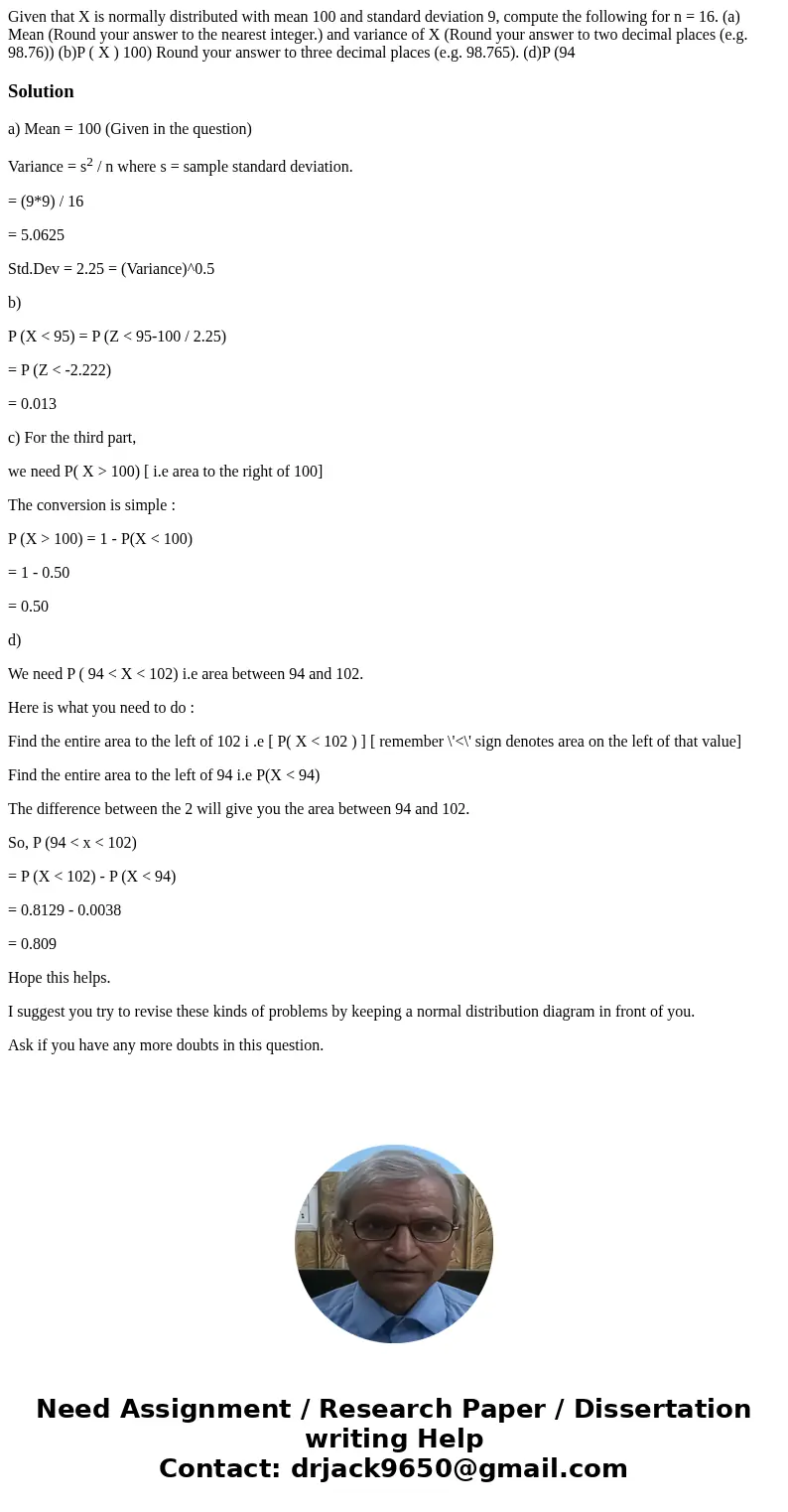Given that X is normally distributed with mean 100 and stand
Solution
a) Mean = 100 (Given in the question)
Variance = s2 / n where s = sample standard deviation.
= (9*9) / 16
= 5.0625
Std.Dev = 2.25 = (Variance)^0.5
b)
P (X < 95) = P (Z < 95-100 / 2.25)
= P (Z < -2.222)
= 0.013
c) For the third part,
we need P( X > 100) [ i.e area to the right of 100]
The conversion is simple :
P (X > 100) = 1 - P(X < 100)
= 1 - 0.50
= 0.50
d)
We need P ( 94 < X < 102) i.e area between 94 and 102.
Here is what you need to do :
Find the entire area to the left of 102 i .e [ P( X < 102 ) ] [ remember \'<\' sign denotes area on the left of that value]
Find the entire area to the left of 94 i.e P(X < 94)
The difference between the 2 will give you the area between 94 and 102.
So, P (94 < x < 102)
= P (X < 102) - P (X < 94)
= 0.8129 - 0.0038
= 0.809
Hope this helps.
I suggest you try to revise these kinds of problems by keeping a normal distribution diagram in front of you.
Ask if you have any more doubts in this question.

 Homework Sourse
Homework Sourse